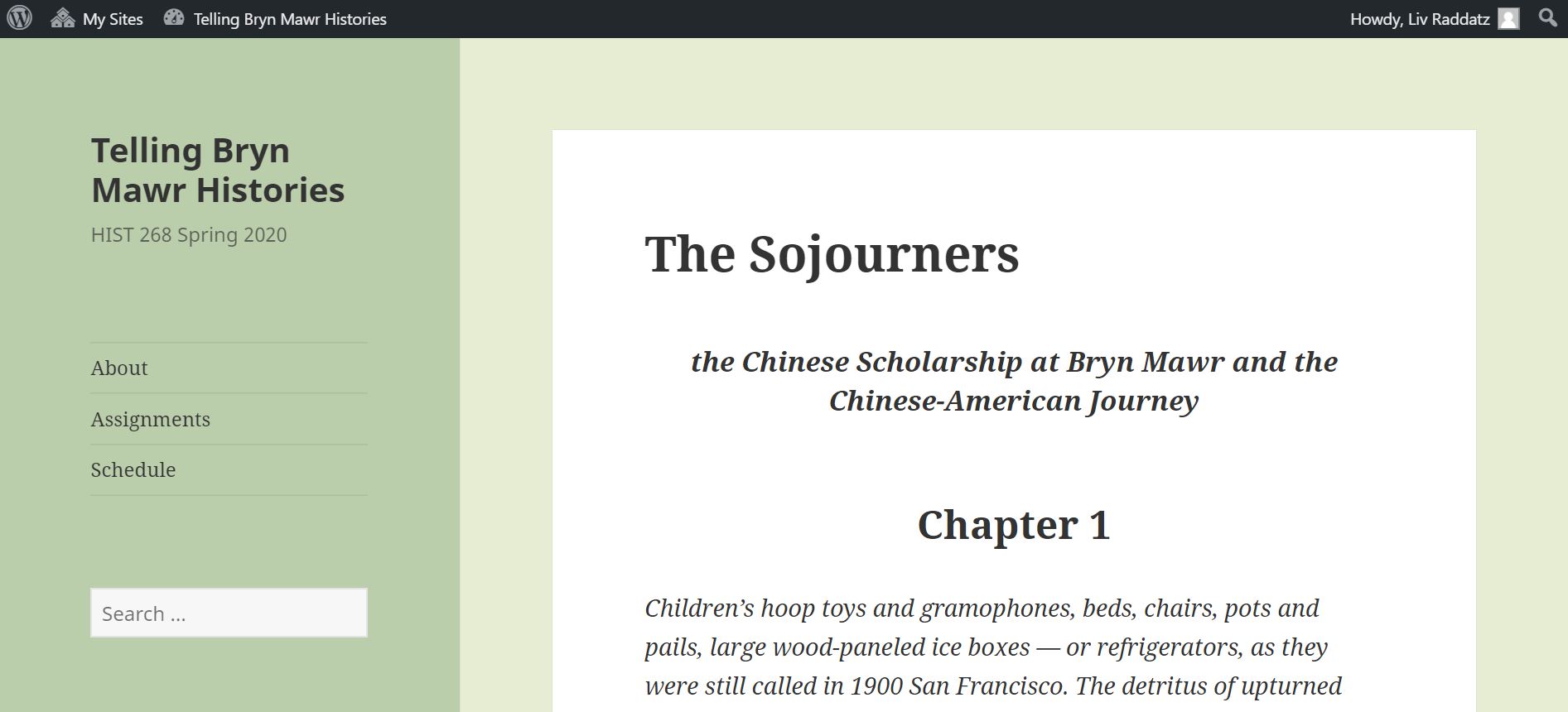Professor: Ignacio Gallup-Diaz
Teaching Assistant: Laney Myers, BMC ’20
Course Description:
This Praxis II Seminar covers historical research practices and methods, in the context of the history of Bryn Mawr College. Together, students will engage with theoretical scholarship about historical production and exclusion. Individually, students will work within the apparatuses of history at the College to frame a final project.
- What does it mean to tell a history of an institution (of higher learning)?
- How do archives represent and obscure?
Reflection:
Bryn Mawr takes its history very seriously! The buildings, the coat of arms, the traditions: all are vested in promoting the image of the College as historic. Of course, the College as a community and as an institution has been changing the way it “tells” those stories. That’s something that has emerged from the projects in our class: the fact that permanent seeming things—traditions, stories about the past—are indeed always changing…and also spaces for debate and reflection about the present.
The Telling Bryn Mawr’s Histories Praxis Seminar sought to engage students in thinking critically about institutional history as a multifaceted and existing in many forms and spaces. In partnership with the wonderful Bryn Mawr Special Collections, individual students planned to frame projects relating to a particular topic, listed below. Students documented progress, and flagged interesting historical issues over at our HIST 268 blog.
The Praxis connection also grounded our work with engaging the community in a meaningful way. In contemplating the glaring absences and under-representation in the archives, we imagined ways to build archives that reflected our experiences, our community, and planned to lead a session at the Community Day of Learning about community-based archiving.
Another issue that emerged over and over again in our class discussions was the feeling that we were re-treading the footsteps of students who had come before us, because we had no way to access research done by students on Bryn Mawr’s institutional history. We met virtually with Eric Pumroy and Allison Mills of Special Collections, and Natalie Shilstut and Alice McGrath of Digital Scholarship, Critical Making, and Digital Collections Management, to discuss options of preserving, archiving, and sharing our own work going forward.
The unexpected turns this semester has taken, the crises layered atop each other, have meant radical transformations in each of our lives as students, professors, and Bryn Mawr historians. All of us have had to painfully re-imagine the scale and focus of our work under these new conditions. Completing final work now is painful, if only for how much it reminds us of what was imagined when the project was conceived. That said, taking this moment as a point to reflect and share our work, I’m so proud of the immense labor, collaboration, and generative ideas that have will be preserved for future generations of Bryn Mawr students, staff, and historians to appreciate.
Class Members & Research Topics:
- Emma Burns, “Mormons at Bryn Mawr: Homosexuals, Feminists, and So-Called Scholars”
- Emily Elmore, “Loyalty Oaths and the Impact of 1950s Education Policy on Student Movements in the 1960s” “
- Talia Horowitz, “”An Exploration of Antisemitic Sentiment at Bryn Mawr, with Particular Focus on M Carey Thomas and Marion Park’s Presidencies”
- Aaliyah Joseph, “Perry House Oral History Project”
- Catherine Lin, “The Sojourners: The Chinese Scholarship at Bryn Mawr and the Chinese-American Journey”
- Maria Mitiuriev, “Mapping Magic: Tracing Pagan and Wiccan Histories at Bryn Mawr College”
- Eliza Mlodzinski, “A Basic Guide to Hell Week and Its History”
- Beck Morawski, “Chasing Elsinore: Studying Bryn Mawr’s History of Fantasy Roleplay, Escapism, and Communal Utopian Worldbuilding in the Time of Quarantine”
- Sydney Munnerlyn, “Quakerism and Secularism at Early Bryn Mawr”
- Lucy Verweij, “The Bedtime Anthology”
- Katie Davenport, “Mental Health Affects College Students Concentration, Ability, and Energy Levels”
Featured Student Project: Catherine Lin, “The Sojourners: The Chinese Scholarship at Bryn Mawr and the Chinese-American Journey”
For my archival research project, I researched the Chinese Scholarship at Bryn Mawr, which was founded in 1916 to allow students from China to attend the college. I drew upon Special Collections materials, newspapers, and journal articles to explore the recipients’ lives and learn about the scholarship’s links with mission work in China, as well as American perceptions of Chinese people. I presented my research in the form of a narrative essay, “The Sojourners: the Chinese Scholarship at Bryn Mawr and the Chinese-American Journey,” available here.

